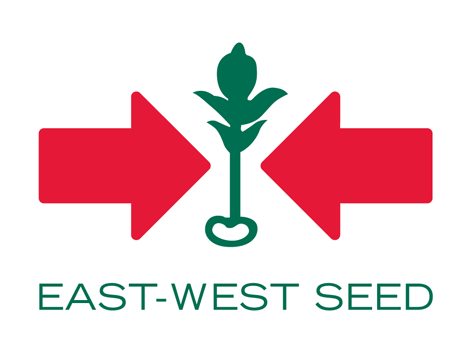Causal Agent:
Fungus (Sclerotium rolfsii)
| Characteristic Symptoms: | |
 |
The most common symptom is the brown to black rot or sunken tissues of the stem near the soil line, which often lead to wilting and death of the plant. |
 |
Under moist conditions, mass of white thread-like mycelia develop on the lesion often girdling the stem base and mustard-size light tan to reddish brown, hard and round sclerotia are embedded in the mycelia. |
| Conditions for Disease Development: | |
 |
The fungus infects many crops, including solanaceous, cucurbits, legumes and onions.
|
 |
The pathogen produces sclerotia, which can survive in the soil for long periods when soil moisture is low.
|
 |
Periods of hot, humid weather favor disease development.
|
 |
Infection can either be direct or through wounds created by nematodes or insects.
|
 |
Germinating sclerotia may also infect fruit, leaves and branches that touch the soil.
|
 |
The fungus is spread into a field by infested soil or cultivating tools, infected transplants, running water, and as sclerotia mixed with seeds.
|
| Management and Control: | |
 |
Avoid dense planting and choose fields which are well-drained and not too acidic.
|
 |
Bury crop debris to a depth of 24 cm to suppress germination of sclerotia.
|
 |
Application of ammonium nitrate before planting or as side dress can help reduce incidence.
|
 |
In new or unaffected areas, crop rotation with non-hosts like corn maybe effective in reducing inoculum in the soil.
|
 |
protect seedlings by drenching with chemical fungicides like difenoconazole (e.g. ScoreⓇ, MontanaⓇ, PursueⓇ, BashⓇ), Pyraclostrobin (e.g. Cabrio 25 ECⓇ), metalaxyl+mancozeb (e.g. Ridomil Gold MZ 68 WGⓇ, Apron XL 350 ESⓇ) or carbendazim ( (Bavistin 50 DFⓇ, Goldazim 500 SSⓇ, Minx 500 SCⓇ, SuperdazimⓇ, Avert 50 WPⓇ, BiostinⓇ). |
To view other diseases, click here.
Need more help? Ask the Doctor.




